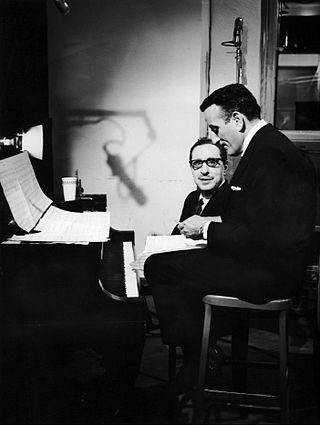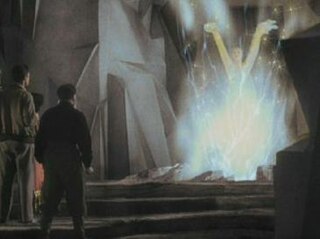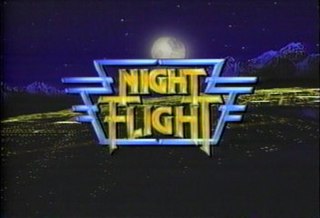Film promotion is the practice of promotion specifically in the film industry, and usually occurs in coordination with the process of film distribution. Sometimes called the press junket or film junket, film promotion generally includes press releases, advertising campaigns, merchandising, franchising, media and interviews with the key people involved with the making of the film, like actors and directors. This process is an important part of any release because of the inherent high financial risk; film studios will invest in expensive marketing campaigns to maximize revenue early in the release cycle. Marketing budgets tend to equal about half the production budget. Publicity is generally handled by the distributor and exhibitors.
A snuff film, snuff movie or snuff video is a type of film that shows, or purports to show, scenes of actual homicide. The concept of snuff films became known to the general public during the 1970s, when an urban legend alleged that a clandestine industry was producing such films for profit. The rumor was amplified in 1976 by the release of a film called Snuff, which capitalized on the legend through a disingenuous marketing campaign. But the film, like others on the topic, relied on special effects to simulate murder. According to the fact-checking site Snopes, there has never been a verified example of a genuine commercially produced snuff film. Videos of actual murders have been made available to the public, generally through the Internet; however, those videos have been made and broadcast by the murderers either for their own gratification or for propaganda purposes, and not for financial gain.
A television film, alternatively known as a television movie, made-for-TV film/movie, telefilm, telemovie or TV film/movie, is a feature-length film that is produced and originally distributed by or to a television network, in contrast to theatrical films made for initial showing in movie theaters, and direct-to-video films made for initial release on home video formats. In certain cases, such films may also be referred to and shown as a miniseries, which typically indicates a film that has been divided into multiple parts or a series that contains a predetermined, limited number of episodes.

The Atomic Cafe is a 1982 American documentary film directed by Kevin Rafferty, Jayne Loader and Pierce Rafferty. It is a compilation of clips from newsreels, military training films, and other footage produced in the United States early in the Cold War on the subject of nuclear warfare. Without any narration, the footage is edited and presented in a manner to demonstrate how misinformation and propaganda was used by the U.S. government and popular culture to ease fears about nuclear weapons among the American public.

The Walt Disney Company has produced an anthology television series since 1954 under several titles and formats. The program's current title, The Wonderful World of Disney, was used from 1969 to 1979 and again from 1991 onward. The program moved among the Big Three television networks in its first four decades, but has aired on ABC since 1997 and Disney+ since 2020.
Compilation may refer to:

The Twentieth Century was a documentary television program that ran on the CBS network from 1957 until 1966. The series produced 112 historical compilation films and 107 "originally photographed documentaries" or contemporary documentaries, each running a half-hour. Productions were narrated by Walter Cronkite and drew on the resources of CBS News. The compilations mixed newsreel footage and eyewitness interviews, focusing on great events, unfamiliar historical episodes, and biographical portraits, including contemporary men in the arts, sciences, law, and politics. As the series progressed, the compilation films were gradually outnumbered by the contemporary documentaries, similar to the work being done in the CBS Reports series, but often treating social and political change overseas rather than in the U.S. Popular and critically-acclaimed, audiences averaged 13 million viewers a week, and the series was an influential forerunner to many subsequent television documentary series.

Film colorization is any process that adds color to black-and-white, sepia, or other monochrome moving-picture images. It may be done as a special effect, to "modernize" black-and-white films, or to restore color films. The first examples date from the early 20th century, but colorization has become common with the advent of digital image processing.

A trailer is a commercial advertisement, originally for a feature film that is going to be exhibited in the future at a movie theater or cinema. It is a product of creative and technical work.
Stock footage, and similarly, archive footage, library pictures, and file footage is film or video footage that can be used again in other films. Stock footage is beneficial to filmmakers as it saves shooting new material. A single piece of stock footage is called a "stock shot" or a "library shot". Stock footage may have appeared in previous productions but may also be outtakes or footage shot for previous productions and not used. Examples of stock footage that might be utilized are moving images of cities and landmarks, wildlife in their natural environments, and historical footage. Suppliers of stock footage may be either rights managed or royalty-free. Many websites offer direct downloads of clips in various formats.
A clip show is an episode of a television series that consists primarily of excerpts from previous episodes. Most clip shows include a frame story in which cast members recall events from past installments of the show, depicted with a clip of the event presented as a flashback. Clip shows are also known as cheaters, particularly in the field of animation. Clip shows are often played before series finales as a way to summarize the entire series, or once syndication becomes highly likely as a way to increase the number of episodes that can be sold. Other times, however, clip shows are simply produced for budgetary reasons.

Night Flight is an online visual-arts magazine and variety television show that originated on cable TV network USA Network. It originally aired from 1981 to 1988 before moving to syndication in the early 1990s. The show relaunched online on nightflight.com in 2015 with original episodes that can be streamed on the subscription channel Night Flight Plus. In April 2018, it returned to cable television as a short form program airing late Friday nights/early Saturday mornings on the network IFC. It includes a mix of mainstream and alternative music videos, artist interviews, B movies, documentaries, short films, stand-up comedy and animation.
A pseudo-documentary or fake documentary is a film or video production that takes the form or style of a documentary film but does not portray real events. Rather, scripted and fictional elements are used to tell the story. The pseudo-documentary, unlike the related mockumentary, is not always intended as satire or humor. It may use documentary camera techniques but with fabricated sets, actors, or situations, and it may use digital effects to alter the filmed scene or even create a wholly synthetic scene.
Castle Films was a film company founded in California by former newsreel cameraman Eugene W. Castle (1897–1960) in 1924. Originally, Castle Films produced industrial and advertising films. Then in 1937, the company pioneered the production and distribution of 8 mm and 16 mm films for home projection, moving its principal office to New York City. It became a subsidiary of Universal Pictures and was eventually renamed Universal 8 from 1977 before folding in the early 1980s due to competition from home video.

The Lion Has Wings is a 1939 British, black-and-white, documentary-style, propaganda war film that was directed by Adrian Brunel, Brian Desmond Hurst, Alexander Korda and Michael Powell. The film was produced by London Film Productions and Alexander Korda Film Productions and 'was preparing the nation [for war] and shining a light on the power of the RAF'.

Davy Crockett was a five-part serial which aired on ABC from 1954-1955 in one-hour episodes, on the Disneyland series. The series starred Fess Parker as real-life frontiersman Davy Crockett and Buddy Ebsen as his friend, George Russel. The first three and last two episodes were respectively edited into the theatrical films Davy Crockett, King of the Wild Frontier and Davy Crockett and the River Pirates (1956). This series and film are known for the catchy theme song, "The Ballad of Davy Crockett".

Imaginary Witness: Hollywood and the Holocaust is a 2004 documentary film directed by Daniel Anker and narrated by Gene Hackman that examines the treatment of the Holocaust in Hollywood films over a period of sixty years and the impact of the films on public perception and thinking, and vice versa. The film was originally produced for the American cable network, American Movie Classics.

The Eye of Vichy is a 1993 French documentary film directed by Claude Chabrol. It consists of a selection in chronological order of authentic footage, mostly newsreels and documentaries, shown on cinema screens in France between 1940 and 1944. Intertitles or a narrator occasionally add linking or supplementary information. The bulk of the material was produced under the Vichy régime and the aim of the film is to show the worldview which the collaborationist government of Pétain promoted to its population.
Collage film is a style of film created by juxtaposing found footage from disparate sources. The term has also been applied to the physical collaging of materials onto film stock.
A serial film,film serial, movie serial, or chapter play, is a motion picture form popular during the first half of the 20th century, consisting of a series of short subjects exhibited in consecutive order at one theater, generally advancing weekly, until the series is completed. Usually, each serial involves a single set of characters, protagonistic and antagonistic, involved in a single story, which has been edited into chapters after the fashion of serial fiction and the episodes cannot be shown out of order or as a single or a random collection of short subjects.









